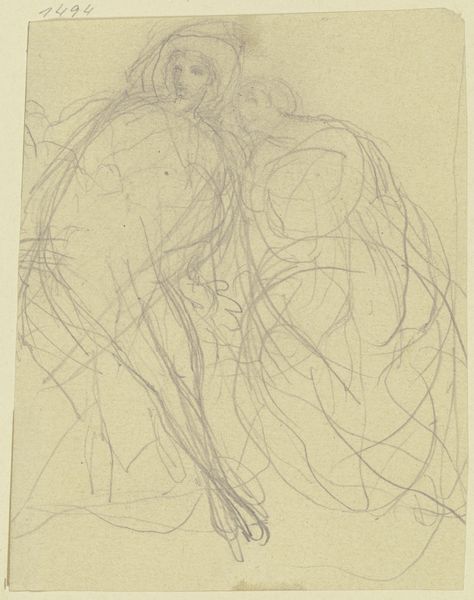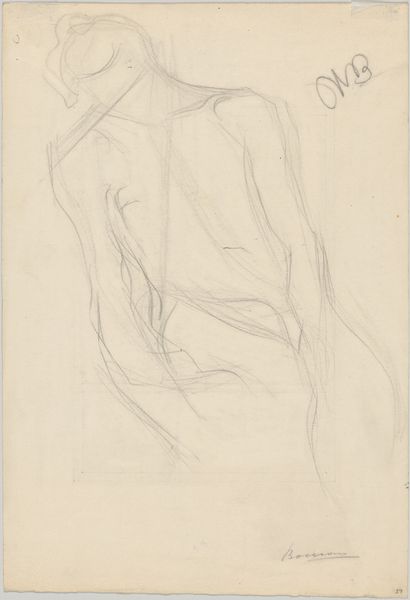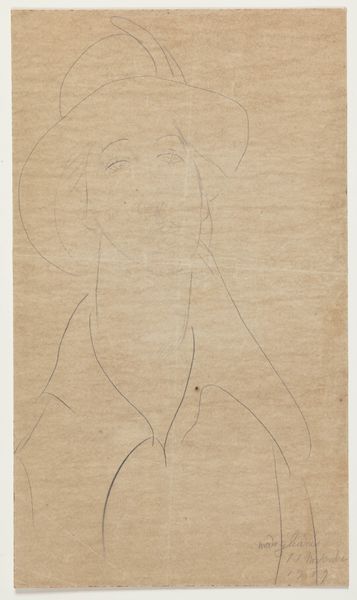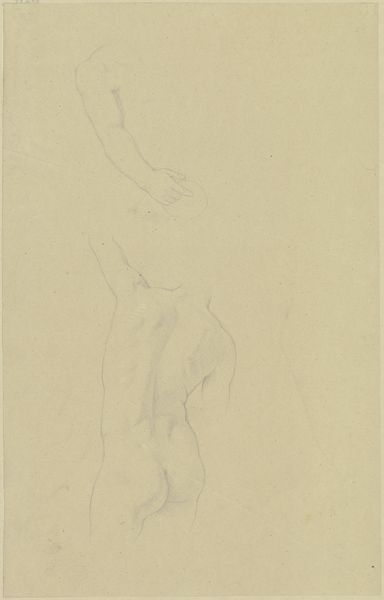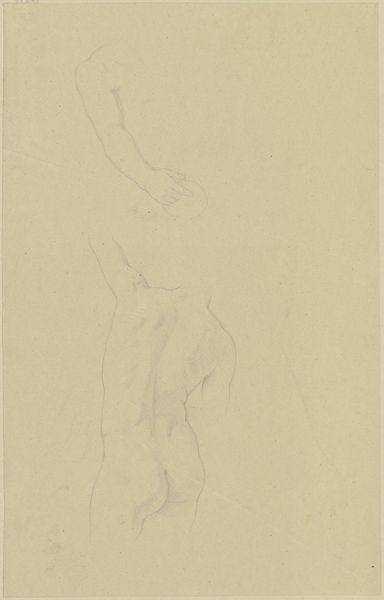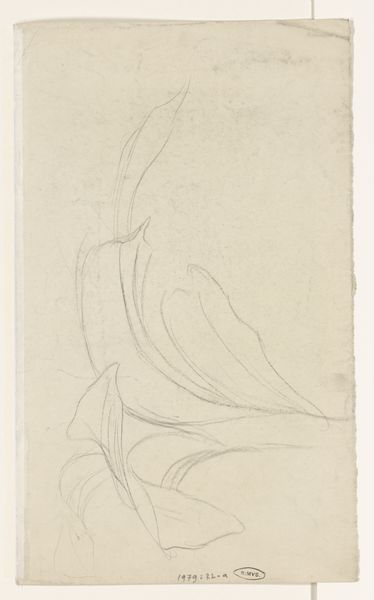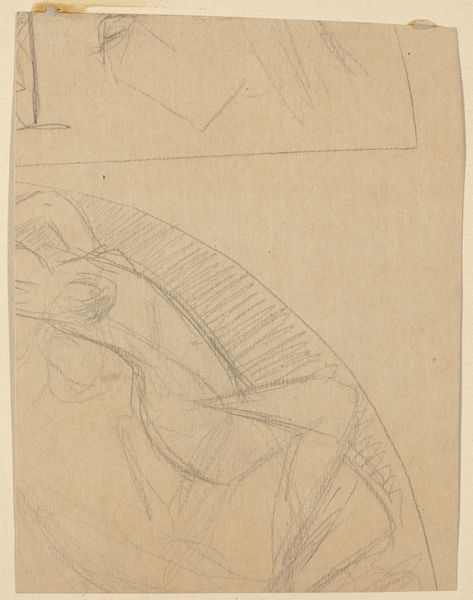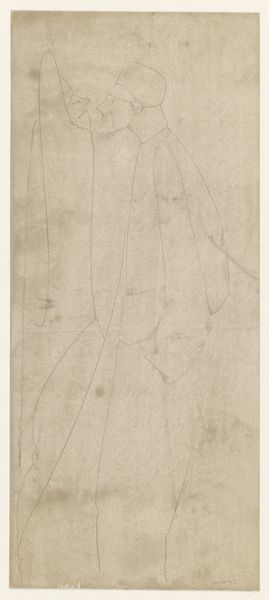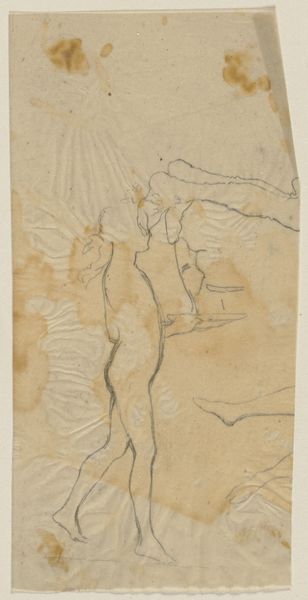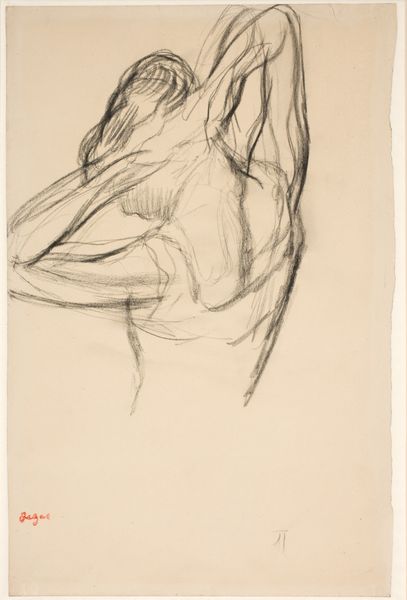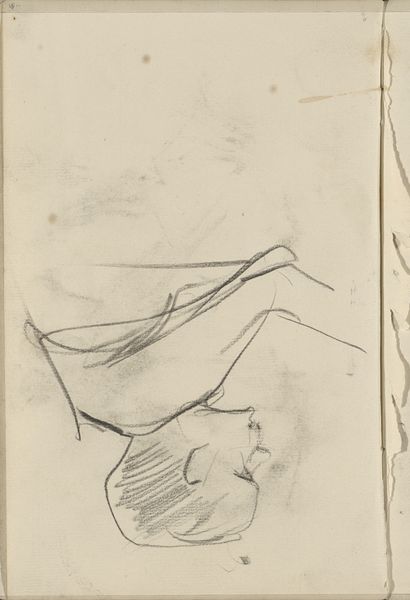
drawing, paper, pencil
#
drawing
#
figuration
#
paper
#
pencil
#
line
#
watercolor
#
realism
Dimensions: height 374 mm, width 286 mm
Copyright: Rijks Museum: Open Domain
Curator: Here we have Bernardus Johannes Blommers' pencil drawing, "Vrouw met kapje en staand kind," dating roughly from 1855 to 1914. It’s currently held in the Rijksmuseum collection. Editor: My first impression is of fragility. The lines are so faint, barely there. It feels more like a fleeting thought captured than a definitive statement. Curator: Precisely! Blommers' choice of pencil on paper lends itself to that ephemerality. Look at how the looping lines give volume to the figure in the foreground, possibly the child, in stark contrast with the lighter rendering of the woman above. What significance do you ascribe to this relationship? Editor: Well, the material scarcity of the era might have affected sketching choices, compelling economical mark-making in studies such as this. Notice the rapid, almost frantic energy evident in the dense scribbles forming the child figure – a practical application of pressure. Curator: Interesting. The overlapping lines do suggest the raw, unbounded energy of childhood. Also, take the implied form of the hood, or "kapje", this headdress evokes the domestic roles women played, a social custom reflected in attire and confirmed in art. It's an intimate window into 19th-century family dynamics, seen through those delicate lines. Editor: It does speak to societal constraints, doesn’t it? However, what’s equally compelling to me is what Blommers chooses to leave out. He prioritized readily available tools, focusing on the raw essence of form and volume rather than intricate detail. How did he source his materials and the potential cost of that kind of drawing paper at the time would reveal details about intended audience too. Curator: Perhaps he valued directness. Think of line drawing's symbolic meaning throughout history and across diverse practices such as architectural sketches, botanical studies, and rapid character sketches. Editor: Or, simply he understood how even the most seemingly rudimentary marks on humble materials might endure, acting as potent, understated forms of silent narrative. Curator: That's it—narratives spun from the quiet dance of pencil on paper. A very apt image to leave us with. Editor: Yes, it leaves us thinking of art-making's accessibility using materials found anywhere.
Comments
No comments
Be the first to comment and join the conversation on the ultimate creative platform.
